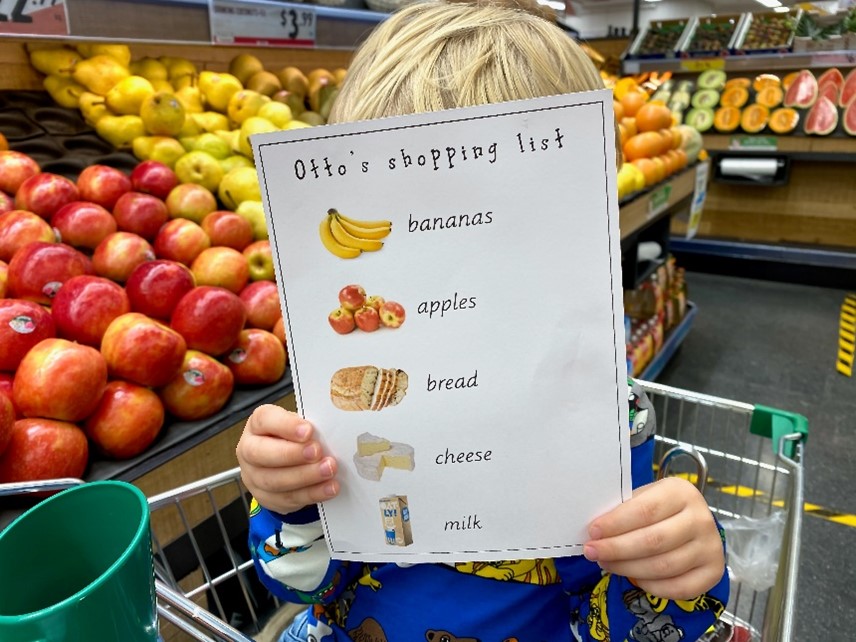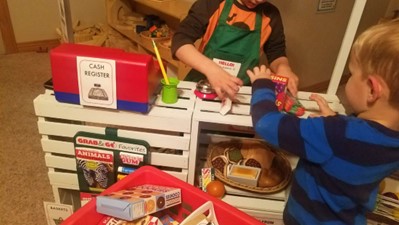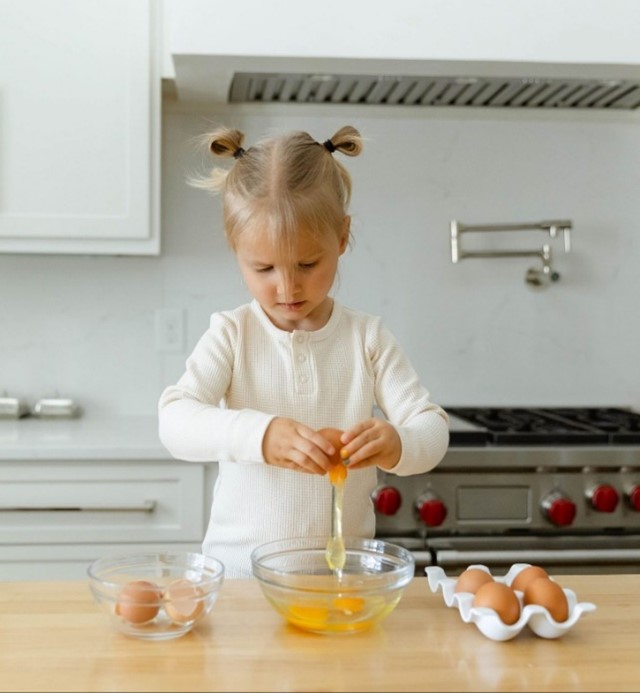Growing up, I watched my mother cook three meals per day every day of the week. Even though the result was delicious, the process seemed tiring. She tried her best to involve me in the cooking process. But the harder she tried, the more dislike for cooking I built. I did not see myself cooking complex meals from scratch that would leave me feeling tired.
Children mimic adults, they learn by seeing. This is why it’s important to show optimism and enthusiasm when it comes to shopping and cooking. A child’s experiences and interests in the kitchen differ based on their age. Younger children may be attracted to the different colors and shapes of foods, whereas older children may be more interested in the nutritional value of items and the cost of foods. Involving your kids in the cooking process, from grocery shopping to cooking is highly encouraged to create a positive relationship with food.
Here are some helpful tips to get your children involved in the kitchen1. Start by doing an inventory of your pantry. Next, allow your kids to help create a grocery list based on items you need but do not have at home. This will help them know the ingredients frequently used at home and what recipes they may be used in. Every week expose them to a new food item of their choice. This can look like trying a new fruit or vegetable. You may also browse a fun, kid-friendly recipe that they would like to shop for. For children too young to read, a picture list may be helpful.
At the store, let them participate in the shopping process. Younger children may participate by identifying shapes, colors, and what they think the item tastes like, crossing items off the list as they gather them, and helping bag items at the registry. For older children, participation may involve discussing the weekly meal plan and budget, recognizing the health benefits of different foods, shopping, and cooking recipes of their choice.
Picture Shopping List2
We recommend keeping your shopping trips brief. If the trip does not go as expected, try again next week. Learn from the previous trip and remember to set ground rules when shopping. You may ask them to stick to the list, use their inside voices, hold on to the cart, and not run around at the store.
We understand visiting the store may not always be possible. Children who cannot visit the store can practice shopping through fun activities at home. For example, making a list, creating a grocery store environment at home3, and bagging items at home. They can also help in age-appropriate cooking tasks such as measuring ingredients, cracking eggs4, whisking batter, and adding toppings to a pizza.
Grocery Store At Home3
Cracking Eggs4
Including children in the kitchen, shopping trips, and the cooking process have lots of benefits that can carry on through adulthood. Some benefits include:
- Building interest in the cooking process.
- Exposure to different foods – their colors, shapes, taste, and ways to cook them.
- Knowledge of the nutritional value of foods.
- Learning discipline and preventing impulsive buying.
- Sticking to a weekly food budget.
- Basic cooking and survival skills.
- More parent-child bonding and turning a stressful activity into a fun, learning experience.
Include your kids in as many activities as you can. It will not only be a good learning experience for them but will also foster a positive relationship with food and cooking for the future.
By Anam Naik, Sodexo Dietetic Intern
References
- “Why every parent should take their children grocery shopping.” SuperKids Nutrition, 31 Dec. 2020.
- “Shopping with Kids – Using a Visual Shopping List + More.” How We Montessori
- “Grocery store dramatic play.” PreK Printable
- “How to Teach Your Kid to Crack an Egg.” Meaning Full Living, 14 Feb. 2022



